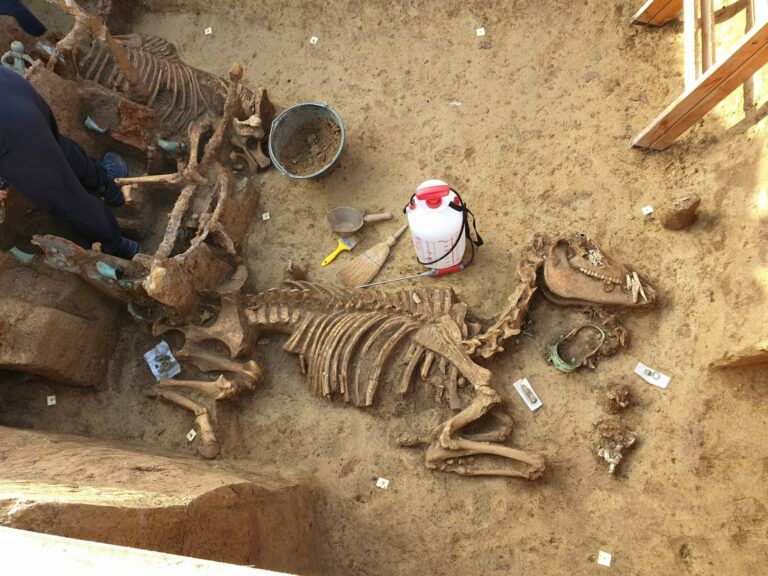Archaeologists in Croatia have recently discovered the fossilized remains of a Roman chariot accompanied by two horses, indicating that it was part of a burial ritual. The excavation took place at the Jankovacka Dubrava site near the village of Stari Jankovci, close to the city of Vinkovci in eastern Croatia. The team of archaeologists from the City Museum Vinkovci and the Institute of Archaeology from Zagreb made this significant find.

The burial chamber, believed to belong to an “extremely wealthy family,” contained the chariot and two horse remains. The burial tradition of interring the chariot and horses together was typically reserved for affluent households. This practice was particularly associated with influential families who held prominent positions in the administrative, social, and economic life of the Pannonia province. During the Roman era in the southern Pannonian Basin, burial under tumuli, which are ancient burial mounds, was considered an extraordinary ritual.

The experts estimate that the bones date back to the third century AD. They are currently working on determining the precise age of the remains to gain a deeper understanding of the family that was buried there 1,800 years ago. Marko Dizdar, the head of the Institute of Archaeology, explained that after this process, the artifacts will undergo restoration and conservation, followed by a thorough investigation of the findings. In a few years, they hope to uncover more information about the family that was laid to rest in this region centuries ago.

The researchers are particularly interested in the horses themselves and whether they were bred locally or sourced from other regions of the Roman Empire. This aspect could provide valuable insights into the prominence and wealth of the family. To gather more information, the team plans to collaborate with local and European institutions.






